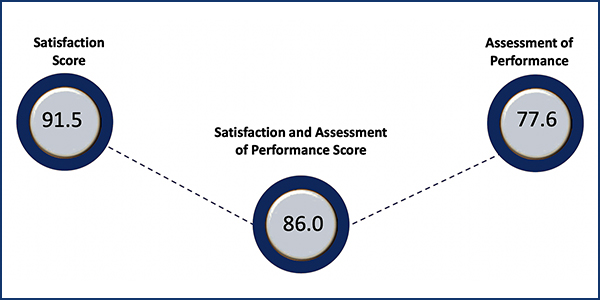NYISO is looking forward to a more supportive political environment at the federal level after a challenging yet fruitful 2020 spent adapting to the pandemic and enhancing market rules to better align with New York’s clean energy transition, CEO Rich Dewey said last week.
“We’re much more likely to have a federal energy policy more closely aligned with the energy policy of New York” with the new Biden administration and leadership changes at FERC, Dewey told the ISO’s Management Committee on Wednesday in an informal “State of the Grid” address. “Some of the political conflict that we’ve been figuring out how to navigate our way through could ebb away and really provide an opportunity for us to come up with a set of rules that recognizes that consistency between the federal and the state policy.”
During his first open meeting as chair on Feb. 18, FERC Chairman Richard Glick ended several proceedings related to capacity markets, while also promising to take a new look at some issues. (See “Next Chapter on RTO Capacity Markets,” Glick Hits ‘Refresh’ at 1st FERC Open Meeting.)
Dewey referred to the “tension and stress” the ISO experienced last year, “specifically around buyer-side mitigation (BSM).”
“You’ve seen some of the policy statements coming from the FERC, and it signals some changes that we’re going to need to address, and you’re starting to see developments in the way of technical conferences on capacity market changes … particularly relating to the minimum offer price rule [MOPR] and BSM,” Dewey said. “You’ve seen some of the statements coming from the chair that the MOPR is unsustainable and that we need to look for solutions that more effectively accommodate the entry of the public policy resources and do so in a way that we can maintain just and reasonable rates.”
NYISO is working to update its BSM processes in order to compensate for the growing disconnect between the original design, intended to cover a few new resources in any given class year, and the up to 50 such resources to be evaluated currently. (See NYISO Explores Improving BSM Processes.)
State officials continue to fine-tune the various clean energy programs, and the New York Power Authority and Public Service Commission have been supportive of the ISO’s public policy transmission process. “We’re very encouraged by the prominence New York state is placing on that,” Dewey said.
New York’s Climate Leadership and Community Protection Act goals are coming into sharper focus, Dewey said. “When we think of getting to 70% renewable electricity by 2030 and 100% carbon free by 2040, reaching those goals will take everything we’ve got.”
The recent supply problems in Texas serve as a reminder to keep reliability as the “paramount concern,” he said.
Survey Says NYISO Satisfies Customers
The annual performance assessment and customer satisfaction survey conducted by the Siena College Research Institute (SCRI) shows NYISO last year continued to score the highest mark and improved slightly on its 2019 results.
The ISO’s 2020 final scores for satisfaction of 91.5 and performance assessment of 77.6 are the highest ever recorded since the introduction of a new polling system in 2016, with a year-end combined score of 86. As in last year’s survey, 60% of the combined score is satisfaction and 40% the performance assessment.
“The customer inquiry satisfaction score was the highest ever, at 98.6, and I think most of us would be happy if a child came home from school with that number on the report card,” SCRI Director Don Levy said.
“I look at the survey responses every quarter, and if anyone gives a particularly negative feedback we try to address it right away and change the situation if possible,” Dewey said. “I get a lot more value out of the deep dive into specific situations because it reveals how someone is thinking.”



